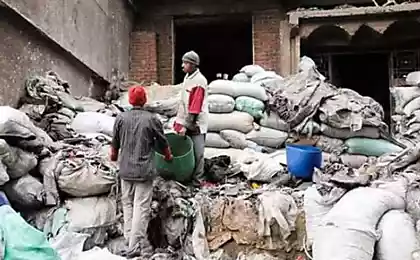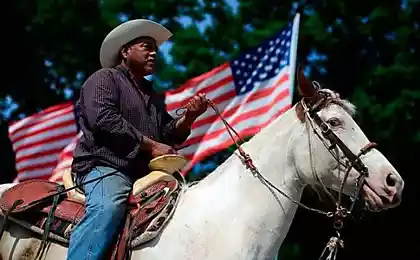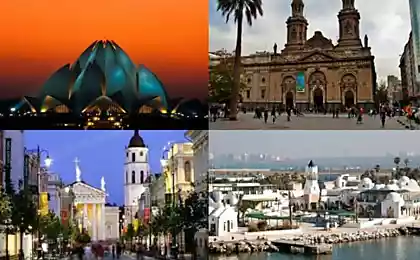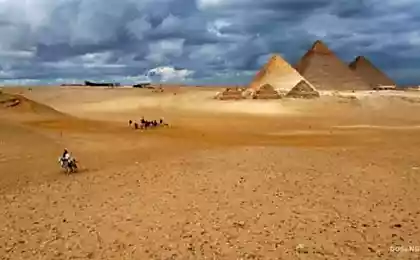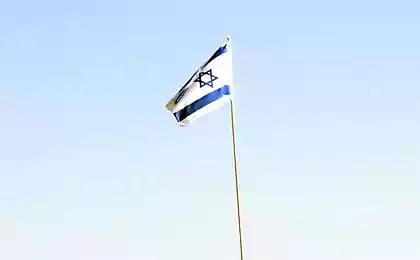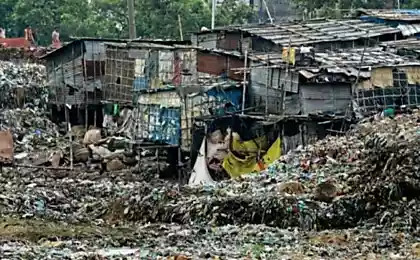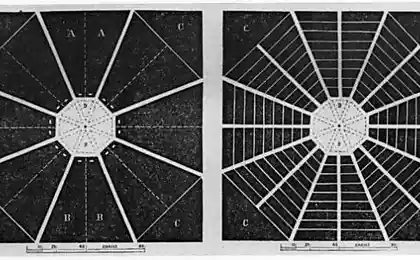2681
City scavengers, so call this quarter of Cairo (46 photos)
They say that the city - a single organism. Home-dwelling people in them - his living cells. Electricity, water, sewerage - something without which could not exist these cells. Parks and Gardens - lungs of the city center - his heart. Roads - arteries of the city - supply and saturate its organs - quarters of the necessary materials. The life of this living organism never stops for a second and throughout his life he was forced to get rid of toxins - garbage and waste. If we continue this analogy, the City scavengers, so call this quarter Cairo - old liver and the body of the patient, whose age has passed for ten centuries.
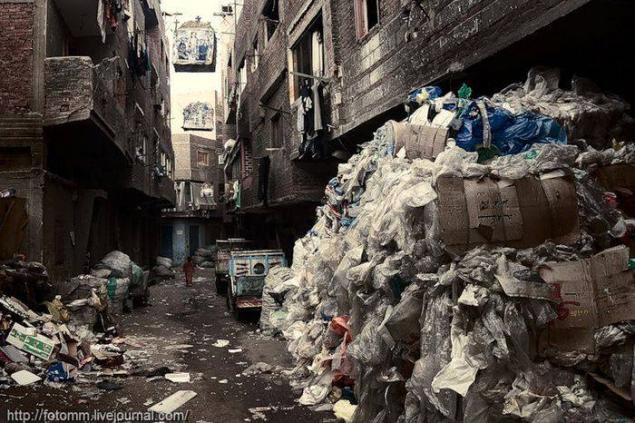
To get here is easy. Just half an hour walk from the Citadel of Saladin, one of the most visited sites of Cairo. Already from the walls of the Citadel you make out on the immense panorama of ten millionth metropolis quarter with houses unusual red-violet color. Another question - whether to go here at all, and whether you are ready for what is to see. I decided on this, driven by curiosity and passion photographer, although it is recognized that the appearance here alone and in the evening may be unsafe. Reassuring that at the end of a long journey to Egypt, my view was already far from the kind of glossy tourist with expensive camera and I to some extent to environmental mimikriroval changing environment. I knew that somewhere out there, in the mountains of Mokattam, the monastery of Saint Simeon and the road to it just passes through the City scavengers, so after some deliberation, I decided to go to those places. Only appeared on the outskirts of the quarter, I saw this picture: Gathered teenagers, the music on the stereo, dancers, replacing each other out in the center of the circle and incendiary rap dance belly dancing.
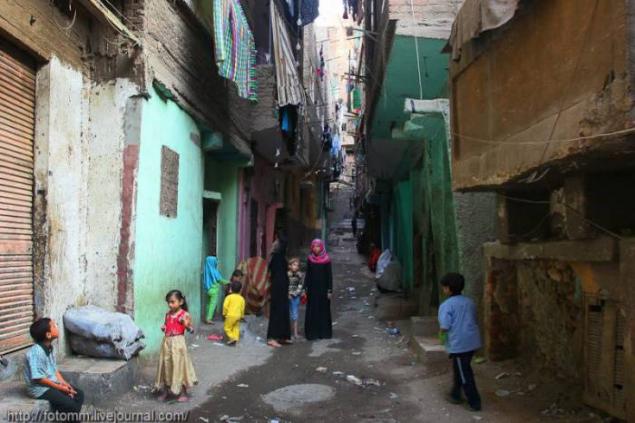
According to statistics from Cairo generates 6, 5000 tons of waste per day, of which 3-3, 5 thousand tons harvested zaballiny so called representatives of a particular social group number about 40 thousand people living in the vicinity of Medina Zebela. For many years the only thing they are doing, passed down from generation to generation - the collection, sorting and recycling of waste. The area came in 1969, when the city administration decided to Cairo all garbage collectors to concentrate in one place.
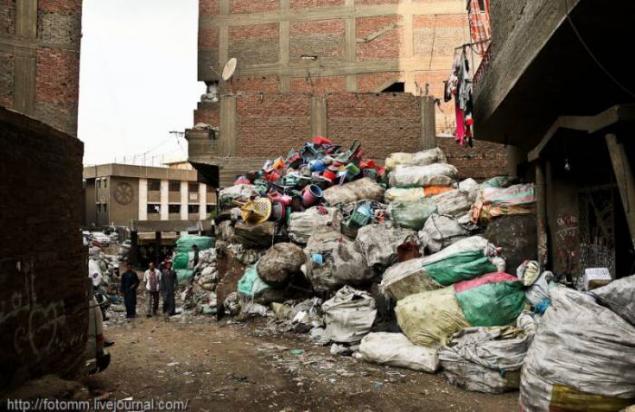
Rubbish here brought huge dump trucks that I saw along the road - there were about fifty, no less! Hence the trash bags were taken to smaller cars in the yards and homes where families already - from children to the elderly - all engaged in it sorted.

Hanging from balconies and rooftops piles of garbage bags of waste, which partition the already narrow streets - is the first thing that catches your eye when you get on the territory of this gloomy quarter.
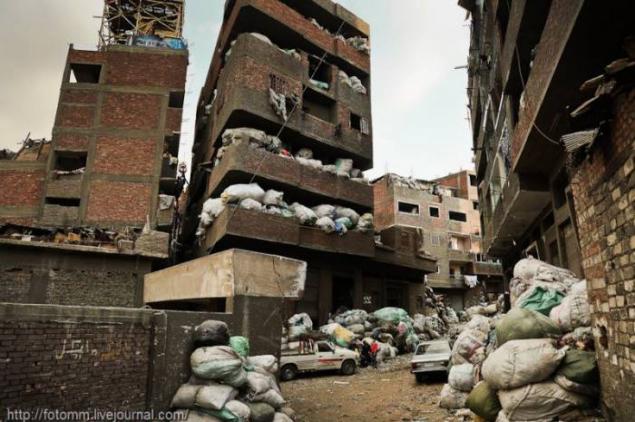
Metal, paper and cardboard, rags and plastic - all put in separate bags. Something then just burn from what quarter worth over heavy smell of burning plastic, which is taken away to processing plants.
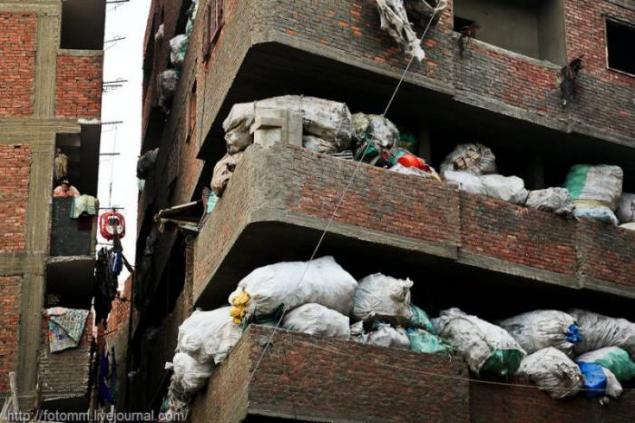
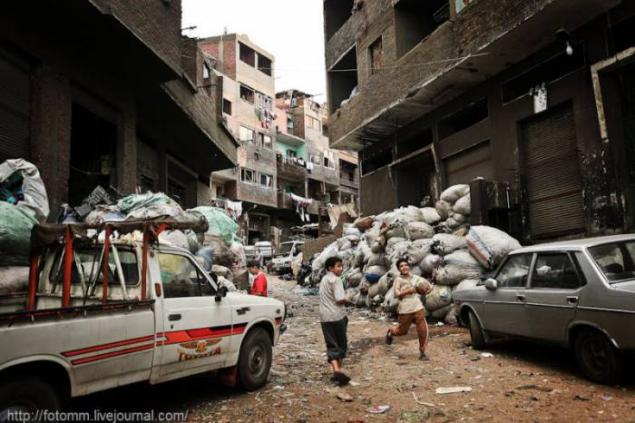
Meanwhile, on the streets is a normal life. Children play and make noise, men sit sedately and smoke hookah, immediately sell fruits and baked cakes on the first floor houses the usual food stalls and edalni. In addition to the people on the streets are full of animals - a goat and chicken, dogs, cats, as well as pigs, which also contribute their mite to waste disposal.

A couple of times I tried to look inside the homes, but the lower floors are usually inundated with so tightly that break up I could not. Before you "dive" inside, I gained a deep breath, even outside that breathe with difficulty, not to mention the stench reigning inside. Dim setting sun barely made its way through the small windows without glass and doorways without doors. In the darkness hardly could be seen crawling among the waste of human figures. Some at the sight of the camera did prohibiting gestures, others continued busily engaged in the business, not paying any attention to me. Within a minute I jumped out, so as not to suffocate.
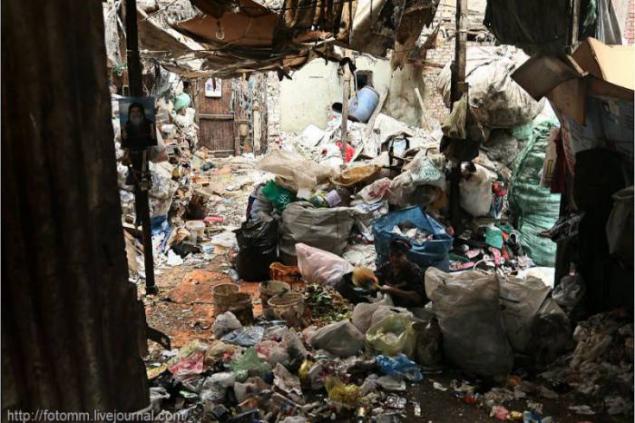

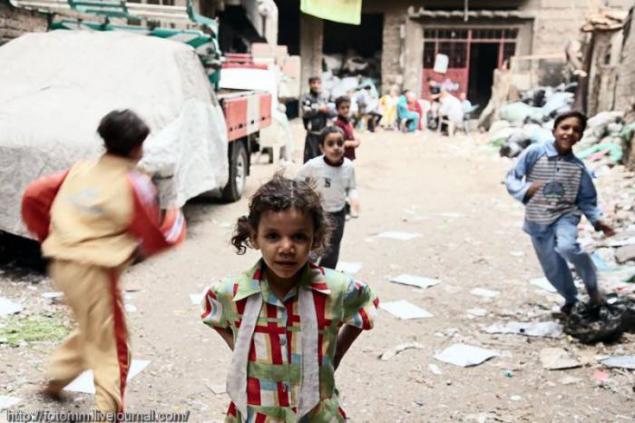
And no one pays any attention to the huge bales, which places already cover travel, hang from all balconies are on rooftops and in the courtyards. Add to this a myriad of buzzing flies, dead rats and cats under our feet, and most importantly the smell that accompanies it all, will develop a realistic picture of the apocalypse.

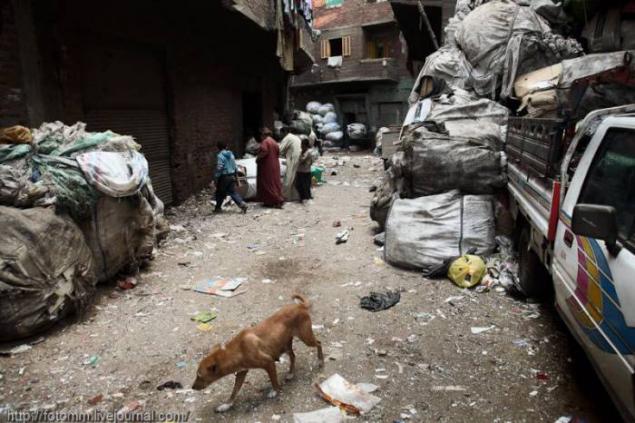
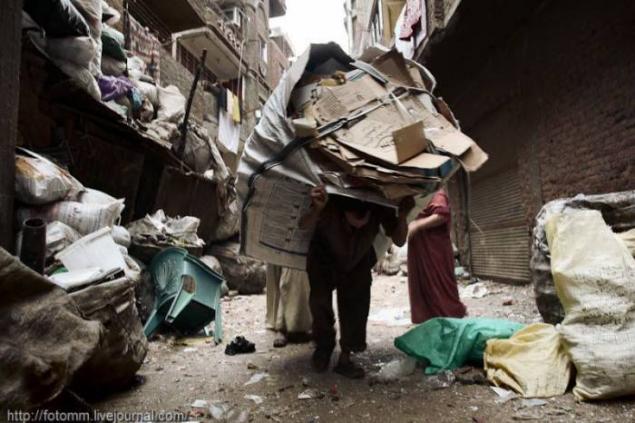
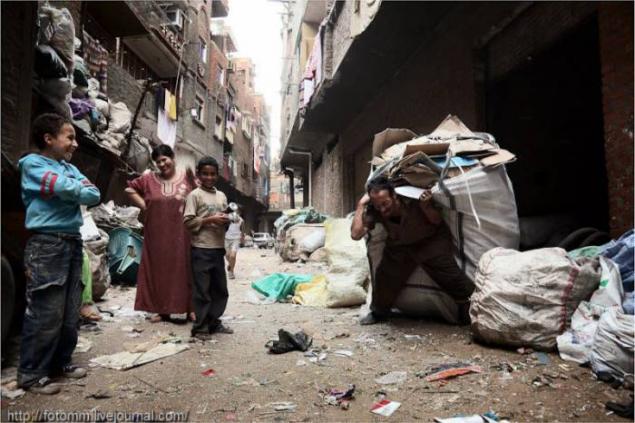
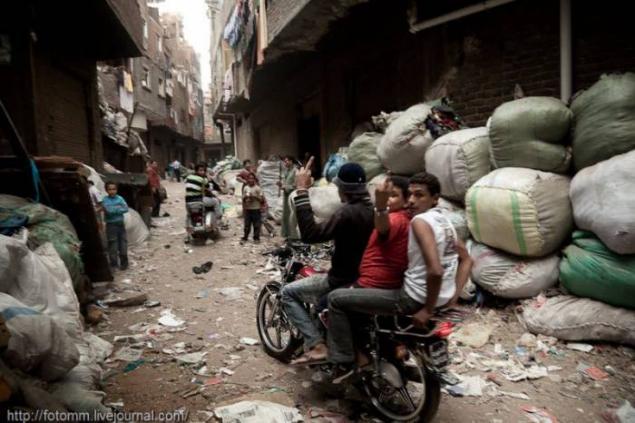

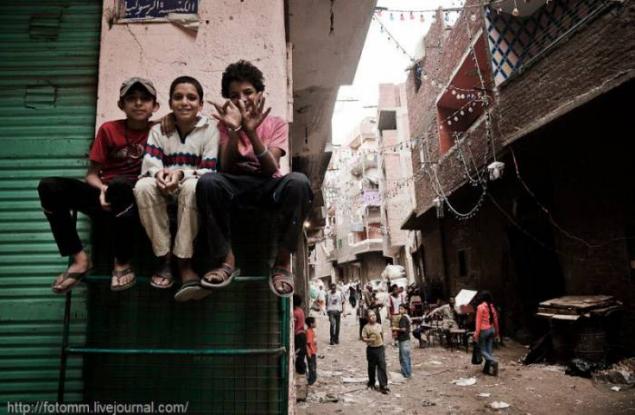
Wandering through the streets littered with garbage, I think, are finding the image of Jesus, crosses, and other attributes of the Christian faith. The main population of the quarter - the Copts, the supporters of one of the branches of the Christian Church. Copts have become scavengers in the time of Caliph al-Hakim. It was the ruler of the Fatimid dynasty, conquered Egypt. He put an end to a relatively peaceful life of all Christians and Muslims living in the country. Copts, in particular, have lost everything. They were supposed to deal with the very dirty and hard work. So trash and began their life. What impressed me most suspended on cables and, as if floating in the open spaces between houses, chapels, made of plywood and cardboard. They plastered with pictures depicting the Creator, decorated with crosses and light bulbs. The meaning of such structures is quite understandable - the faces of the saints of Jesus should not touch the dirt. And how to do it in a city that seems to be just out of it and is?

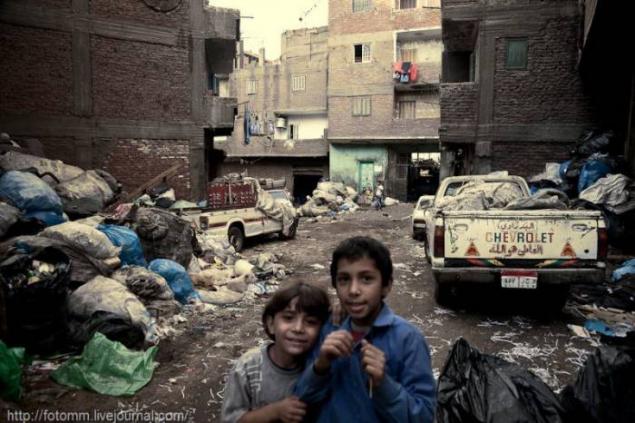
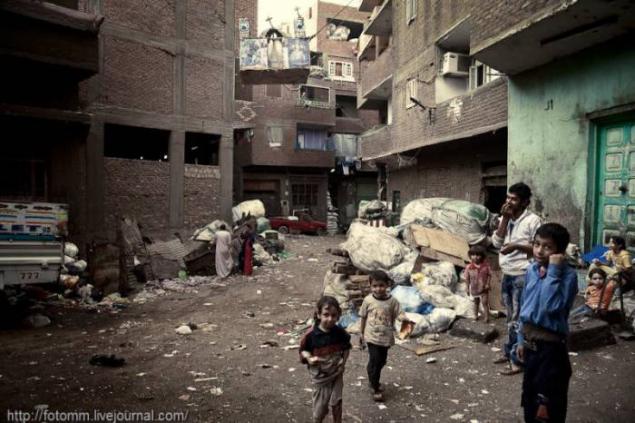
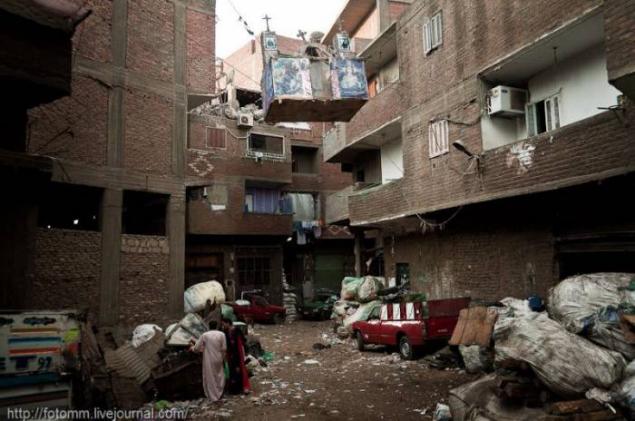
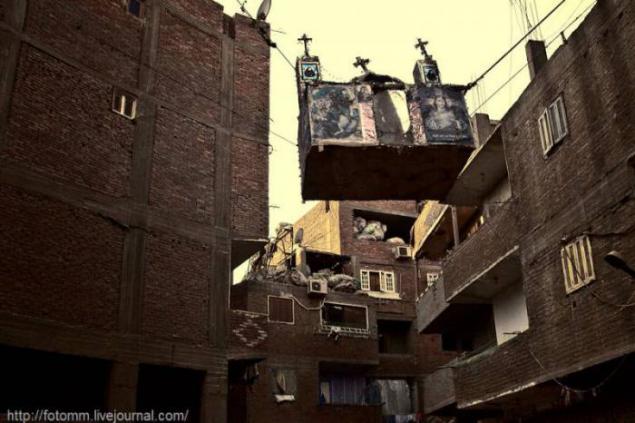

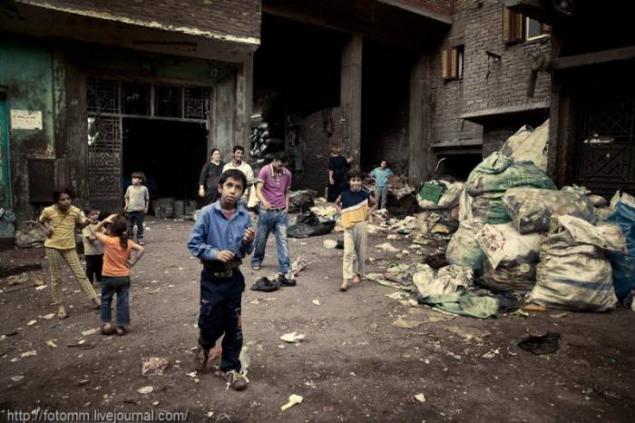



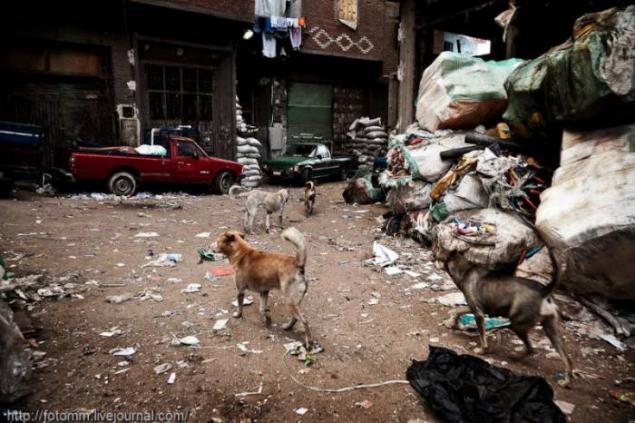
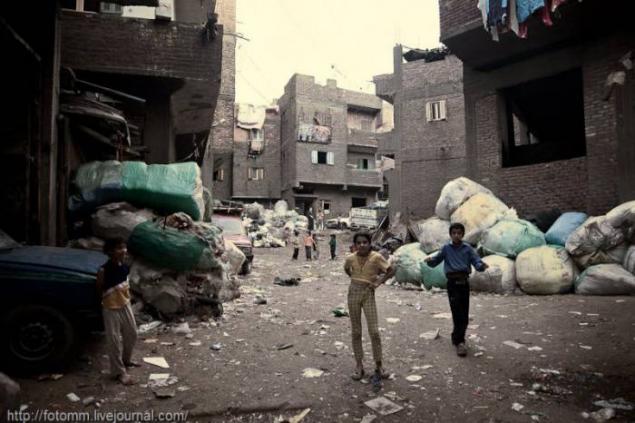


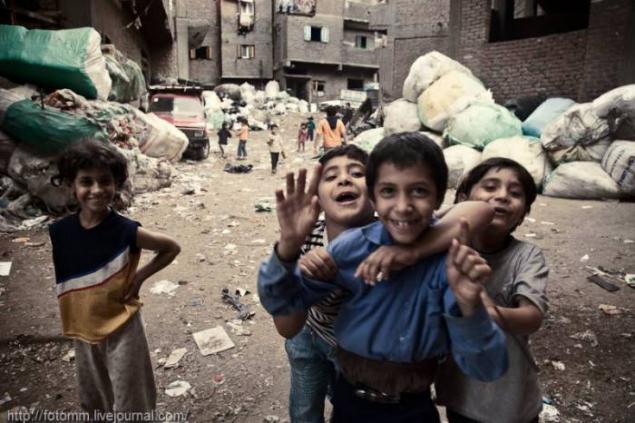
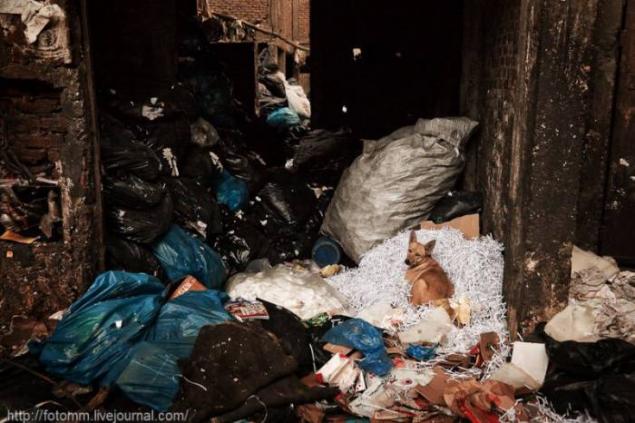
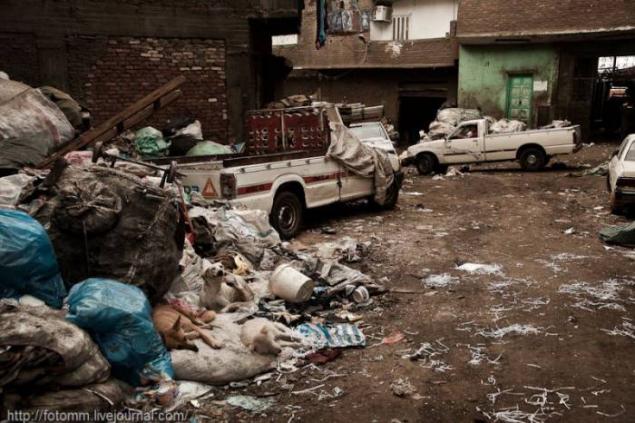
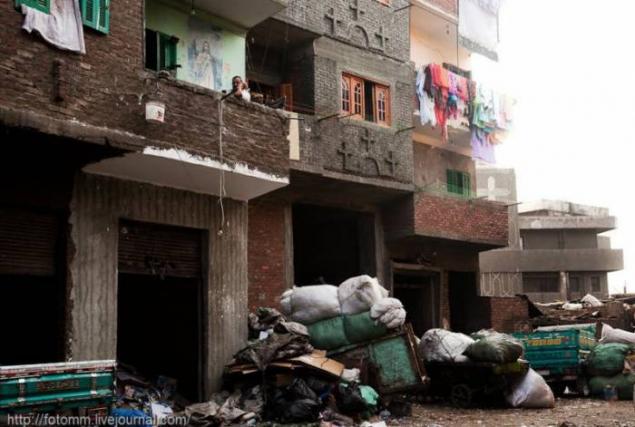
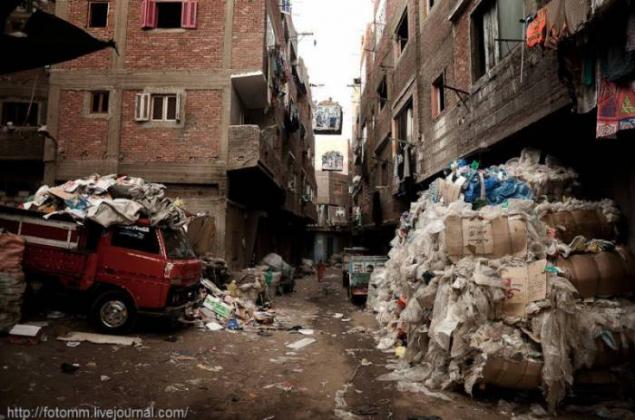
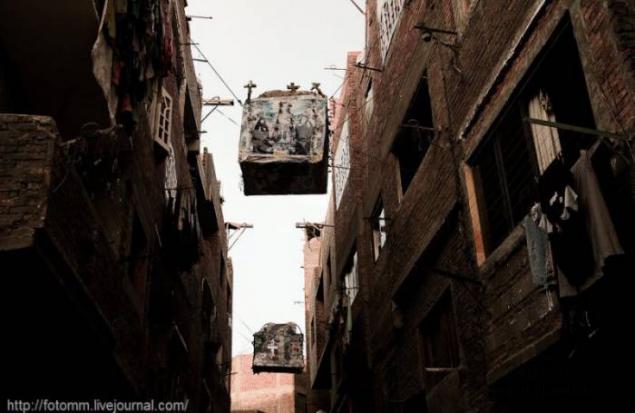
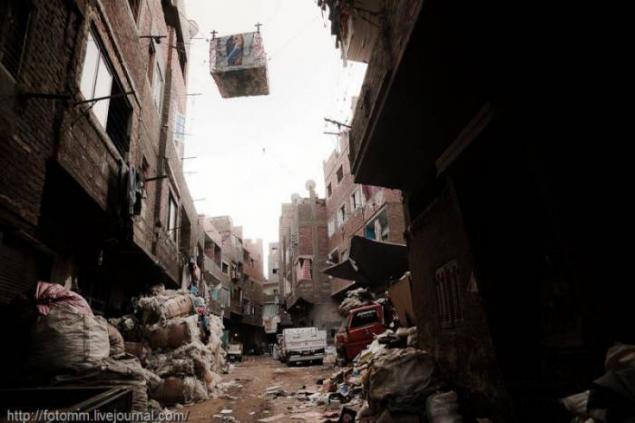

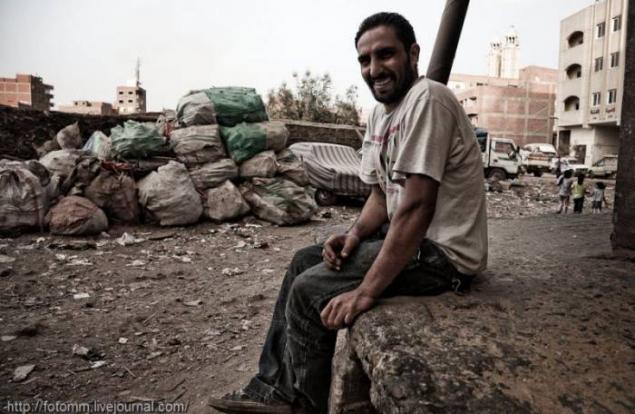

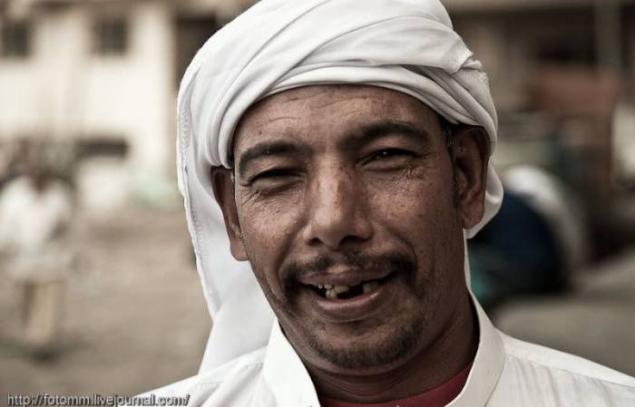

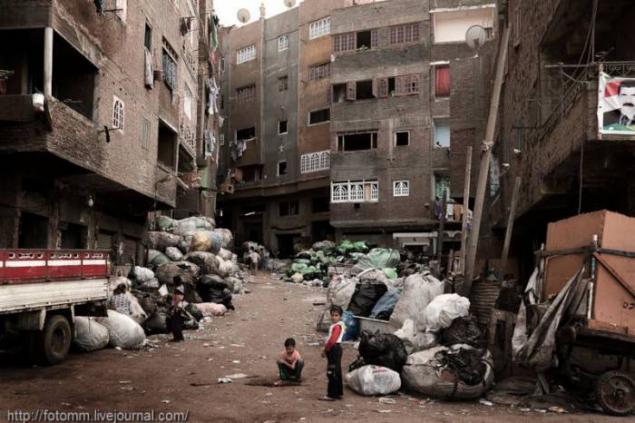
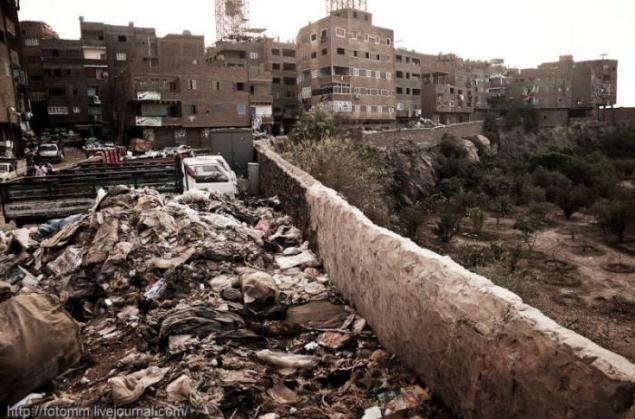

To get here is easy. Just half an hour walk from the Citadel of Saladin, one of the most visited sites of Cairo. Already from the walls of the Citadel you make out on the immense panorama of ten millionth metropolis quarter with houses unusual red-violet color. Another question - whether to go here at all, and whether you are ready for what is to see. I decided on this, driven by curiosity and passion photographer, although it is recognized that the appearance here alone and in the evening may be unsafe. Reassuring that at the end of a long journey to Egypt, my view was already far from the kind of glossy tourist with expensive camera and I to some extent to environmental mimikriroval changing environment. I knew that somewhere out there, in the mountains of Mokattam, the monastery of Saint Simeon and the road to it just passes through the City scavengers, so after some deliberation, I decided to go to those places. Only appeared on the outskirts of the quarter, I saw this picture: Gathered teenagers, the music on the stereo, dancers, replacing each other out in the center of the circle and incendiary rap dance belly dancing.

According to statistics from Cairo generates 6, 5000 tons of waste per day, of which 3-3, 5 thousand tons harvested zaballiny so called representatives of a particular social group number about 40 thousand people living in the vicinity of Medina Zebela. For many years the only thing they are doing, passed down from generation to generation - the collection, sorting and recycling of waste. The area came in 1969, when the city administration decided to Cairo all garbage collectors to concentrate in one place.

Rubbish here brought huge dump trucks that I saw along the road - there were about fifty, no less! Hence the trash bags were taken to smaller cars in the yards and homes where families already - from children to the elderly - all engaged in it sorted.

Hanging from balconies and rooftops piles of garbage bags of waste, which partition the already narrow streets - is the first thing that catches your eye when you get on the territory of this gloomy quarter.

Metal, paper and cardboard, rags and plastic - all put in separate bags. Something then just burn from what quarter worth over heavy smell of burning plastic, which is taken away to processing plants.


Meanwhile, on the streets is a normal life. Children play and make noise, men sit sedately and smoke hookah, immediately sell fruits and baked cakes on the first floor houses the usual food stalls and edalni. In addition to the people on the streets are full of animals - a goat and chicken, dogs, cats, as well as pigs, which also contribute their mite to waste disposal.

A couple of times I tried to look inside the homes, but the lower floors are usually inundated with so tightly that break up I could not. Before you "dive" inside, I gained a deep breath, even outside that breathe with difficulty, not to mention the stench reigning inside. Dim setting sun barely made its way through the small windows without glass and doorways without doors. In the darkness hardly could be seen crawling among the waste of human figures. Some at the sight of the camera did prohibiting gestures, others continued busily engaged in the business, not paying any attention to me. Within a minute I jumped out, so as not to suffocate.



And no one pays any attention to the huge bales, which places already cover travel, hang from all balconies are on rooftops and in the courtyards. Add to this a myriad of buzzing flies, dead rats and cats under our feet, and most importantly the smell that accompanies it all, will develop a realistic picture of the apocalypse.







Wandering through the streets littered with garbage, I think, are finding the image of Jesus, crosses, and other attributes of the Christian faith. The main population of the quarter - the Copts, the supporters of one of the branches of the Christian Church. Copts have become scavengers in the time of Caliph al-Hakim. It was the ruler of the Fatimid dynasty, conquered Egypt. He put an end to a relatively peaceful life of all Christians and Muslims living in the country. Copts, in particular, have lost everything. They were supposed to deal with the very dirty and hard work. So trash and began their life. What impressed me most suspended on cables and, as if floating in the open spaces between houses, chapels, made of plywood and cardboard. They plastered with pictures depicting the Creator, decorated with crosses and light bulbs. The meaning of such structures is quite understandable - the faces of the saints of Jesus should not touch the dirt. And how to do it in a city that seems to be just out of it and is?






























